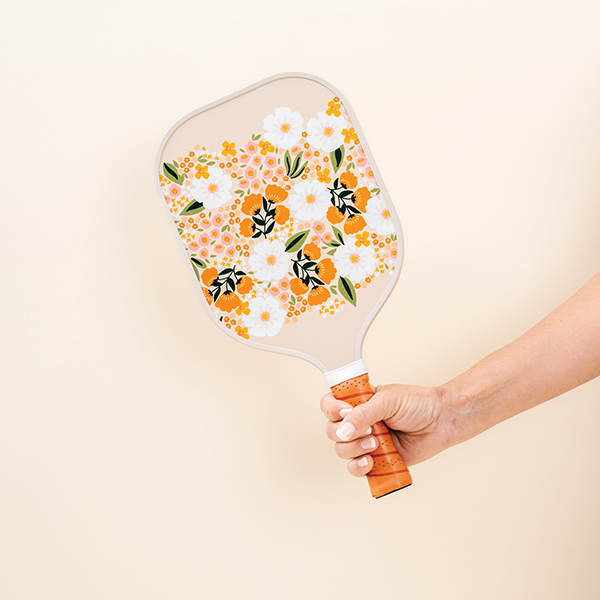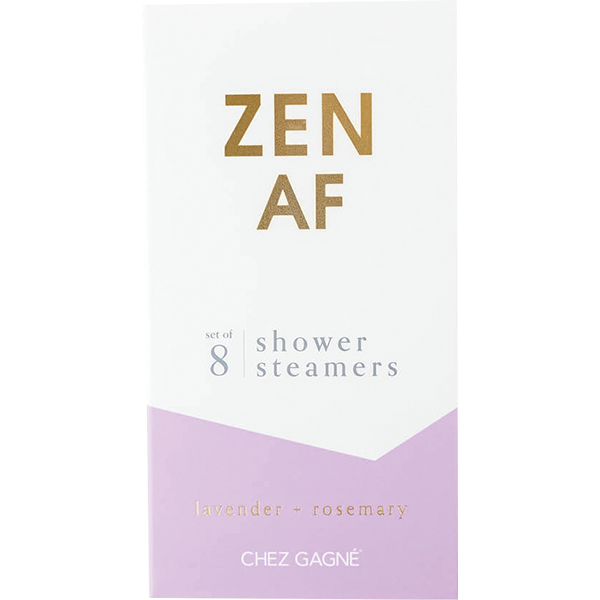Art’s Appeal
Arts or Crafts?
Ever wondered what the difference is between "arts" and "crafts"? According to Linda Van Trump, managing director of the Craft Organization Development Association, this is an age-old debate. "There is no clear distinguishing factor," she says, "although someone once told me, 'Art is in the mind; it takes crafts to bring it to the public's eye.'"
Handmade Sales
It was 2004 when artist Judy Dunn was commissioned to create a dozen of her signature peace cranes. What Dunn didn’t know at the time was that the cranes were being bought as a memorial to a soldier who had lost his life in the Iraq war. The soldier loved to make origami cranes and often gave them to children in Iraq. As it turned out, Dunn’s polymer clay creations preserved his legacy beautifully. Dunn, an artist in Acton, MA, who creates a wide range of products with polymer clay, was paid for the cranes. She never cashed the check.
Dunn’s example might be unusual, but the theme of the story—consumers and artists connecting through handmade work—is heard repeatedly as an explanation for the popularity of handmade, artist-created products.
Reach out and touch someone
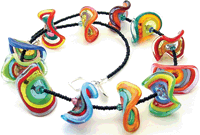 Such connections are what really sell handmade products, according to Mary Strope, vice president of Wholesalecrafts.com and its annual tradeshow, the American Craft Retailers Expo. “The artist’s lifestyle is also part of the story. [Customers] are buying into the lifestyle of the artist when they buy the product,” Strope says.
Such connections are what really sell handmade products, according to Mary Strope, vice president of Wholesalecrafts.com and its annual tradeshow, the American Craft Retailers Expo. “The artist’s lifestyle is also part of the story. [Customers] are buying into the lifestyle of the artist when they buy the product,” Strope says.
“Customers like handmade because the products are unique and because these products have a story behind them,” says Ann Fruland, director of marketing for Chicago Market: Living and Giving, an annual industry tradeshow that includes the Beckman’s Handcrafted Show. “These are often people who have nice homes, and they want to fill them with products that mean a little more to them.” Fruland adds that the connection customers feel to artists’ stories can make pieces more valuable than run-of-the-mill, store-bought goods.
Nancy Cann of Cellar Art in Woodstock, GA, agrees. “Handmade art is most appealing when the customer either meets the artist or learns something of the artist, or at a minimum, the craft behind the art,” says Cann, who creates fused glass accessories. “Often, a piece of art will strike a chord that represents something to the customer that makes it personal, and that’s something that one doesn’t find with manufactured goods.”
Incidentally, in a survey conducted in 2001, the Craft Organization Development Association valued the direct impact from sales of handmade crafts at $14 billion. CODA, based in Onia, AR, works to foster public appreciation and understanding of crafts across North America.
Under the handmade umbrella
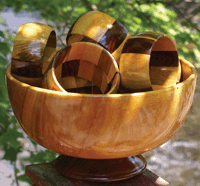 While there is a strong consensus about the popularity of handmade products, there is less agreement on exactly what fits under the “handmade, artist-created” label.
While there is a strong consensus about the popularity of handmade products, there is less agreement on exactly what fits under the “handmade, artist-created” label.
The first category of such products is where the artist is both the designer and the creator of the product. The second tier is when the artist is the designer and the creator but sometimes hires extra production help in the studio.
The last category is when the artist is only the designer. In this classification, pieces are designed by American artists, but are handmade by workers in foreign countries, such as China. These products are handmade, but do they still fulfill the same romantic premise that the word invokes? The answer, as many are finding, is “sometimes.”
“The lines become blurred the farther the distance between the designer and the maker,” says Heather Zondervan, of Metallic Evolution. Zondervan and her husband, John, create metal art near Guelph, Ontario. Zondervan has assistants who help to produce work in her Ontario studio, but she and her husband work alongside them to protect the integrity of the design. “Keeping everything in-house and ‘intimate’ is critical to keep the true spirit in the artform,” Zondervan says.
Not the same old, same old
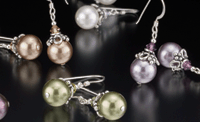 Products made by hand are, by definition, separate and unique. And that, according to Strope, is also a big draw—especially for retailers who are looking to differentiate their stores from their big-box competitors. Even better, says Strope, smaller artists are able to accommodate changing trends faster than are big factories.
Products made by hand are, by definition, separate and unique. And that, according to Strope, is also a big draw—especially for retailers who are looking to differentiate their stores from their big-box competitors. Even better, says Strope, smaller artists are able to accommodate changing trends faster than are big factories.
Robert and Ginny Santerre, of Arrowsic Island, ME, agree that the personal and quirky touches of handmade products appeal to customers. The couple, who own Arrowsic Island Pottery, make a wide variety of products (such as plates, mugs and oil lamps) by hand, and say their customers can discern fine art and enjoy its appeal. “They like that the dishes don’t stack neatly,” laughs Ginny Santerre.
At risk of losing the niche?
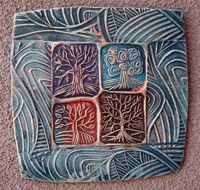 If the unique nature of a handmade product helps it sell, wouldn’t buying the product wholesale dilute its niche appeal and make it no longer unique?
If the unique nature of a handmade product helps it sell, wouldn’t buying the product wholesale dilute its niche appeal and make it no longer unique?
Not to worry. Industry professionals point out that artists have limited time and lack the production capacity to create a glut of products. Elsa Mikus, co-founder of Tempest in a Teapot, in Point Pleasant, NJ, makes chimes from silverware pieces found in flea markets, along with her partner, Barbara Ryan. She says that practical issues, such as the limits imposed by supply and time, ensure that her company’s products never saturate the marketplace. “We make every piece by hand, and we can only make a certain number every week,” she says.
Carter Seibels of Divali Glass Jewelry, based in Berkeley, CA, crafts and sells jewelry using lampwork beads that she makes herself. She says it is every artist’s dream to achieve the kind of success that results in their work becoming visible everywhere. But, she says, artists don’t lose sight of their art in pursuit of profitability. ‘I don’t want to be a designer saying I will engage in my art only for myself,’ but I also always want to keep my business a hands-on process,” she says.
Art and affordability
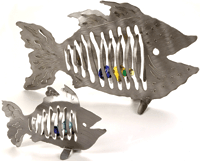 Small-scale productions handmade by the artist are a good thing, but do they translate into expensive work that only a few can afford? While industry experts agree that art is often for the affluent, many artists are creating pieces that are more affordable. Maria Kenarova of KenarovART, in Santa Fe, NM, makes ceramic pieces that capture the spirit of the Southwest.
Small-scale productions handmade by the artist are a good thing, but do they translate into expensive work that only a few can afford? While industry experts agree that art is often for the affluent, many artists are creating pieces that are more affordable. Maria Kenarova of KenarovART, in Santa Fe, NM, makes ceramic pieces that capture the spirit of the Southwest.
Her decorative wall plaques make affordable souvenirs, retailing from approximately $20 on up.
Seibels, whose exclusive pieces can retail for hundreds of dollars, also wholesales one-bead necklaces for $21. She adds that people are willing to buy when the product is truly unique.
Dunn says artists need to create art at all price points. At the same time, she worries that there is a tendency among the buying public to “have it all right away and to do so cheaply.”
“Maybe if we took our time, saved up a bit, we could have things that are of more value to us,” Dunn says. Dunn’s work is priced from $30 to $400 retail. “As you can imagine, the $30 items are the big sellers,” she says.
But Dunn says having less expensive, more accessible offerings does not diminish her higher-end work. “Ultimately, it can satisfy the yen some have to have just a piece of what you are creating,” she says. “They may want the high-end piece, but will be able to connect with it through the more affordable work.”
For the same reason, Linda Van Trump recommends that retailers stock a variety of pieces from the artists whose work they carry. Van Trump says larger, visually arresting pieces help sell smaller pieces, so it is important for the artist to create across a wide range, and for the retailer to stock a variety of pieces. “People are drawn to the larger, one-of-a-kind pieces; they read the story and then pick up a small piece,” says Van Trump, managing director of CODA.
“You want to have room and make it so the customer falls in love with the pieces. You want something for everybody,” says Seibels.
Gloria Brooke, owner of Brooke Pottery, in Lakeland, FL, says art does not have to “cost the earth.” “It occupies a wide range,” she says.
Made in America
 Brooke’s store has a sign that reads: “Buy American craft. It’s worth it.”
Brooke’s store has a sign that reads: “Buy American craft. It’s worth it.”
Retailer Debra Monahan, who owns La Muse Gifts, in Alexandria, VA, just outside Washington, DC, says that handmade art needs to be further categorized as “Made in America.”
For retailers like Brooke and Monahan, the handmade nature of their products is intimately tied with the “Made in America” label. Monahan, whose store is frequented by many military personnel, says patriotism and a desire to support local artists has something to do with it. “Many people are disenchanted with imports and how safe they are,” Monahan says.
While that may be true, others worry that the label can be very confusing, especially when some components of a product are not made in this country. “Certain components of jewelry, for example, just cannot be purchased in the United States anymore,” says Strope. “They are still assembled by hand by artists here, but some gems are mined around the world.”
In an increasingly globalized economy, does emphasizing American-made crafts imply a form of isolationism? No, says Van Trump: The “handcrafted in the USA” concept speaks to consumers’ increasing desire to know where their products come from, and how they are made.
“The green movement has us buying locally and supporting local artists,” she says, implying that “handcrafted in America” ties in with the romantic vision these handmade, artist-created products paint.
Selling the story
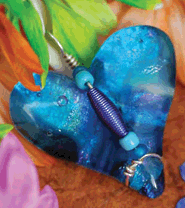 Retailers and artists agree that an artist’s story helps sell her products. This is why, Fruland says, the Beckman’s and crafted Gift Show hosts “Meet the Artist” seminars to help retailers learn more about the artists from whom they buy.
Retailers and artists agree that an artist’s story helps sell her products. This is why, Fruland says, the Beckman’s and crafted Gift Show hosts “Meet the Artist” seminars to help retailers learn more about the artists from whom they buy.
Strope says she has seen retailers and their customers forge long-term relationships with artists, and that knowing the artists’ stories helps. “Many retailers will walk into an artist’s booth [at a tradeshow] and ask, ‘So what’s new?’ ” Strope says.
Kenarova, like many other artists, sends retailers a short biography of herself along with pictures to help customers get to know her. Retailers who use these stories alongside the merchandise sell more, Kenarova says.
“Find a story to tell about the artist or the process of how an object is created. Give the customer a connection,” advises Cann, of Cellar Art. “A story can help turn a casual buyer into a collector who will then keep coming back for more.”
“What artists have that manufacturers don’t, is story,” emphasizes Dunn. “Story about why they do the work they do, and how they live ordinary lives, all the while creating objects that add a richness to our lives.”
Professionals across the industry agree that this is a large part of a handcrafted product’s charm. As Gloria Brooke puts it: “You walk out of my store not just with a piece of pottery, but with a piece of the artist as well.”



















